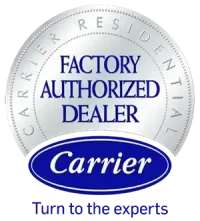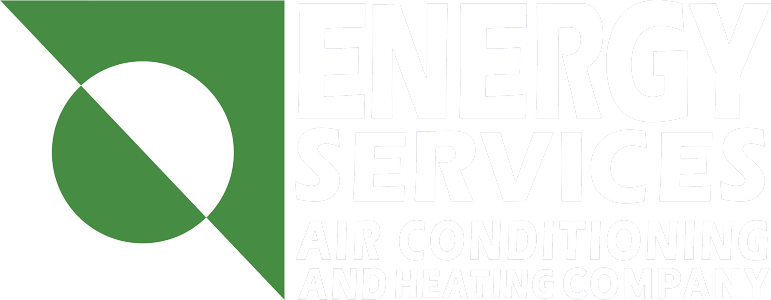Understanding When Your Heating System Needs Replacement in St. Charles
Determining the right time to replace your heating system requires careful consideration of multiple factors that directly impact your comfort and energy expenses throughout our harsh Illinois winters. At Energy Services Air Conditioning and Heating Company, we evaluate heating systems based on age, efficiency ratings, repair frequency, and overall performance metrics to help homeowners make informed decisions. Most furnaces in the St. Charles area operate reliably for fifteen to twenty years with proper maintenance, though many variables influence this timeline including installation quality, usage patterns, and maintenance history.
The climate conditions in St. Charles demand reliable heating performance from November through March, with temperatures frequently dropping below freezing and occasional polar vortex events bringing extreme cold. Your heating system works harder during these periods, and an aging unit struggles to maintain consistent temperatures while consuming excessive energy. Rising utility bills often signal declining efficiency, particularly when your energy usage increases despite maintaining similar thermostat settings year over year. Modern heating systems achieve Annual Fuel Utilization Efficiency ratings between ninety and ninety-eight percent, while older units may operate at sixty to seventy percent efficiency, wasting substantial energy and money.
Advanced Heating Technologies Available for Your Home
Today’s heating replacement options incorporate sophisticated technology that dramatically improves comfort control and energy management compared to systems installed even ten years ago. Variable-speed blowers adjust airflow based on heating demands, eliminating the temperature swings common with single-stage systems while operating more quietly and efficiently. Two-stage and modulating furnaces provide precise temperature control by adjusting heat output to match your home’s exact requirements, running at lower capacities most of the time for improved efficiency and consistent comfort.
Smart thermostats integrate seamlessly with new heating systems, learning your schedule and preferences while optimizing operation for maximum efficiency. These devices typically reduce heating costs by twenty to thirty percent through intelligent scheduling and adaptive algorithms that consider factors like outdoor temperature, humidity levels, and occupancy patterns. Zoning systems represent another significant advancement, allowing different areas of your home to maintain independent temperatures, which proves especially valuable in multi-story homes where upper floors naturally stay warmer than lower levels.
The Comprehensive Replacement Process We Follow
Our heating replacement process begins with a thorough evaluation of your existing system and home’s specific requirements. We perform detailed load calculations considering your home’s square footage, insulation levels, window efficiency, and architectural features to determine the appropriate heating capacity. Oversized systems cycle frequently, creating temperature fluctuations and increased wear, while undersized units run continuously without adequately heating your space. Proper sizing ensures optimal efficiency, comfort, and equipment longevity.
During the consultation phase, we assess your current ductwork condition and configuration, as inadequate or damaged ducts significantly impact system performance regardless of furnace quality. Ductwork modifications or sealing may be necessary to maximize your new system’s efficiency and ensure proper airflow distribution throughout your home. We also evaluate ventilation requirements, particularly important for high-efficiency furnaces that require specific venting configurations to operate safely and effectively. The installation process typically requires one to two days, depending on system complexity and any necessary modifications to existing infrastructure.
Financial Considerations and Long-Term Value Analysis
Investing in heating replacement involves evaluating both immediate costs and long-term savings potential through improved efficiency and reduced maintenance requirements. High-efficiency systems command premium prices but generate substantial savings through lower monthly operating costs, often recovering the additional investment within five to seven years. Federal tax credits and local utility rebates frequently offset upgrade costs, particularly for ENERGY STAR certified equipment meeting stringent efficiency standards.
We’re proud to provide the best in HVAC and indoor air quality services to residential customers throughout Chicago and the surrounding communities, helping families understand the total cost of ownership beyond initial purchase price. Financing options make replacement accessible when unexpected failures occur or when upgrading makes economic sense despite a functioning system. Extended warranties provide peace of mind and protection against unforeseen repair costs, with many manufacturers offering ten-year parts warranties and additional labor coverage options.
Key Benefits of Modern Heating System Installation
- Enhanced indoor air quality: New systems incorporate advanced filtration capturing smaller particles including allergens, dust mites, and microscopic pollutants
- Quieter operation: Modern furnaces feature improved sound insulation and variable-speed motors that operate at lower noise levels
- Consistent temperatures: Advanced controls eliminate hot and cold spots through better airflow management and precise heat output modulation
- Improved humidity control: Proper sizing and variable-speed operation maintain optimal humidity levels during heating season
- Smart home integration: WiFi-enabled systems allow remote monitoring and control through smartphone applications
Selecting the Right Equipment for St. Charles Homes
Choosing appropriate heating equipment requires understanding the specific challenges our regional climate presents and matching system capabilities to your home’s unique characteristics. Gas furnaces remain the most popular choice in St. Charles due to natural gas availability and cost-effectiveness, though electric heat pumps gain popularity as technology improvements enable efficient operation in colder temperatures. Dual-fuel systems combining heat pumps with gas furnaces provide ultimate flexibility, automatically selecting the most efficient fuel source based on outdoor conditions.
Whether you need to find the right HVAC system for a new home or want to have maintenance completed on your current system, you can count on us to provide expert guidance through the selection process. We consider factors including your home’s age, insulation quality, planned residence duration, and comfort preferences when recommending replacement options. Energy recovery ventilators and whole-house humidifiers often complement new heating systems, addressing indoor air quality concerns while maintaining efficiency.
Post-Installation Support and Maintenance Planning
Professional installation represents only the beginning of your relationship with your new heating system. Proper maintenance ensures your investment delivers expected efficiency and longevity while preventing unexpected breakdowns during critical heating periods. Annual tune-ups identify potential issues before they escalate into costly repairs, maintaining warranty coverage while optimizing performance. Filter replacement schedules vary based on system type and household factors including pets and allergies, with most homes requiring changes every one to three months during heating season.
Our comprehensive maintenance programs include priority service scheduling, discounted repairs, and detailed system inspections that extend equipment life while maintaining peak efficiency. Documentation of regular maintenance proves valuable for warranty claims and provides historical performance data useful for identifying gradual degradation patterns. Smart diagnostic features in modern systems alert homeowners and service technicians to developing problems, enabling proactive maintenance that prevents complete system failures during extreme weather events when replacement becomes challenging and uncomfortable.










